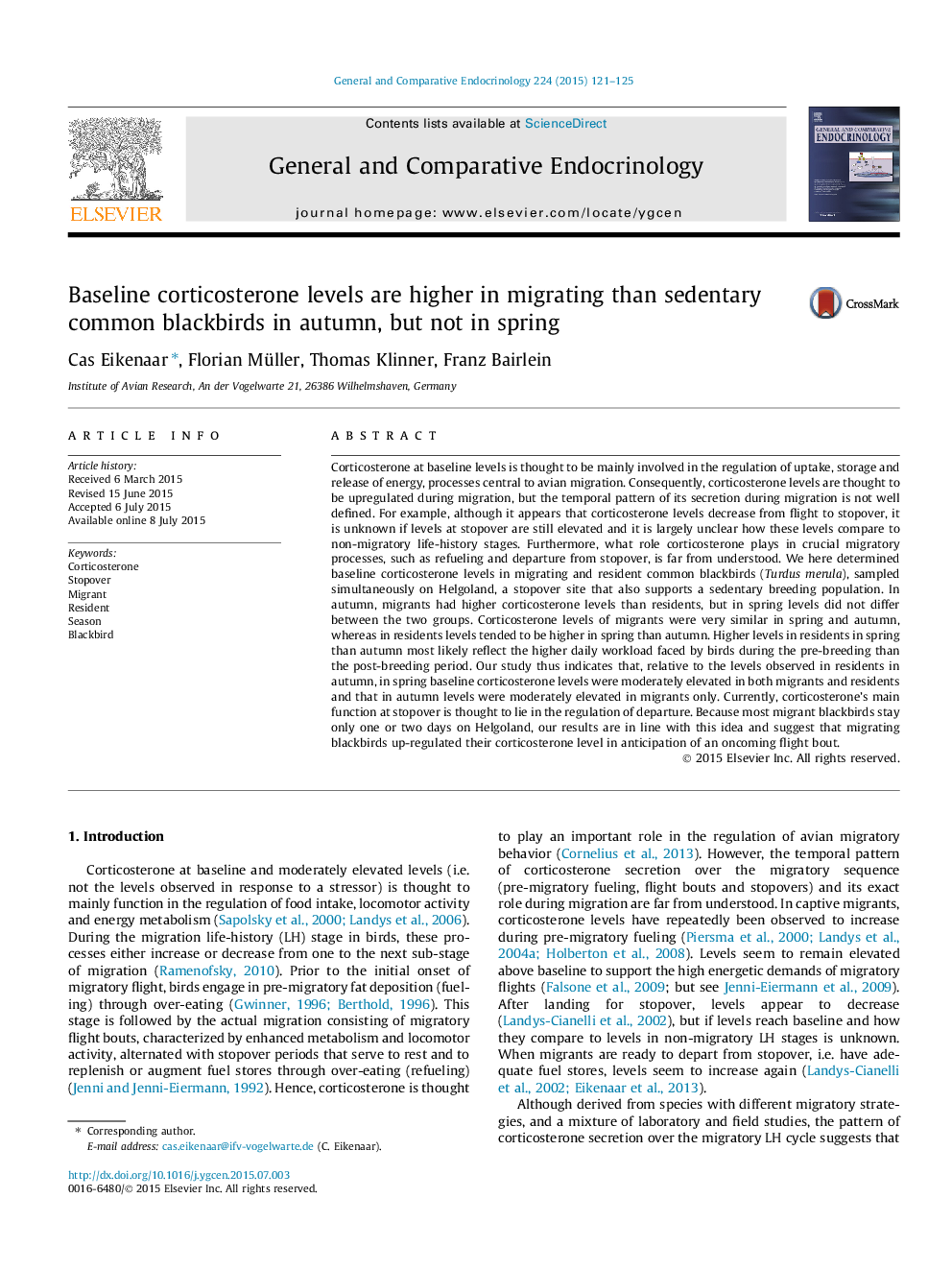| کد مقاله | کد نشریه | سال انتشار | مقاله انگلیسی | نسخه تمام متن |
|---|---|---|---|---|
| 5900863 | 1568882 | 2015 | 5 صفحه PDF | دانلود رایگان |
- Baseline corticosterone levels were determined in resident and migrant blackbirds.
- Both types of birds were sampled at the same site during the same period.
- Corticosterone levels were moderately elevated over baseline in migrants.
- Levels in migrants were comparable between spring and autumn migration.
- Our results suggest that corticosterone functions in migratory departure.
Corticosterone at baseline levels is thought to be mainly involved in the regulation of uptake, storage and release of energy, processes central to avian migration. Consequently, corticosterone levels are thought to be upregulated during migration, but the temporal pattern of its secretion during migration is not well defined. For example, although it appears that corticosterone levels decrease from flight to stopover, it is unknown if levels at stopover are still elevated and it is largely unclear how these levels compare to non-migratory life-history stages. Furthermore, what role corticosterone plays in crucial migratory processes, such as refueling and departure from stopover, is far from understood. We here determined baseline corticosterone levels in migrating and resident common blackbirds (Turdus merula), sampled simultaneously on Helgoland, a stopover site that also supports a sedentary breeding population. In autumn, migrants had higher corticosterone levels than residents, but in spring levels did not differ between the two groups. Corticosterone levels of migrants were very similar in spring and autumn, whereas in residents levels tended to be higher in spring than autumn. Higher levels in residents in spring than autumn most likely reflect the higher daily workload faced by birds during the pre-breeding than the post-breeding period. Our study thus indicates that, relative to the levels observed in residents in autumn, in spring baseline corticosterone levels were moderately elevated in both migrants and residents and that in autumn levels were moderately elevated in migrants only. Currently, corticosterone's main function at stopover is thought to lie in the regulation of departure. Because most migrant blackbirds stay only one or two days on Helgoland, our results are in line with this idea and suggest that migrating blackbirds up-regulated their corticosterone level in anticipation of an oncoming flight bout.
Journal: General and Comparative Endocrinology - Volume 224, 1 December 2015, Pages 121-125
